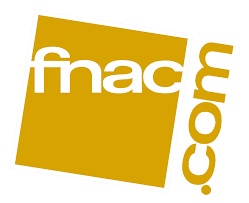Dvořák - New World 2.0
Toulouse Chamber Orchestra
Gilles Colliard, conductor
A fascinating electroacoustic reworking of the New World Symphony! In keeping with their desire to democratize classical music, the Chamber Orchestra of Toulouse and its musical director Gilles Colliard revisit Antonin Dvořák’s masterpiece. One hundred and thirty years on, this music is reborn in an entirely original and surprising form.
Dvořák was director of the New York Conservatory when he composed this work in 1893. So it was indeed in the United States that he wrote his ninth and last Symphony. However, throughout the work, he paints a portrait of his beloved native Bohemia, which he left a year earlier. There are also some Amerindian colors inspired by experiences during his time on American soil. The premiere was a resounding success, and the symphony has been enthusiastically received by audiences ever since, right up to the 21st century. And yet so many changes have taken place! Social, musical, historical... new listening habits, the noise of modernity, changes in instrument making with the arrival of new timbres and the omnipresence of music in the media and on our screens.
It was from this observation that the musicians set out to offer us their New World Symphony. What a challenge! Restoring it without damaging it.
Finding a new way to interpret it, using instruments that didn’t exist at the time: an electric string quartet that joins the acoustic string orchestra and a digital piano (or synthesizer) that plays all the wind parts. A whole new world of sound is opened up: the familiar themes are enhanced by additional colors, without distorting their texture. One is invited to take a journey through sound.
So here’s New World 2.0: this new, intimate nomenclature is enough to reproduce all the parts of the symphony orchestra. Thanks to amplification and a few microphones, the same volume of sound is obtained.
With a great concern for musical authenticity, Gilles Colliard’s desire is above all not to distort the composer’s intention. The structure of the work’s four movements is preserved in its entirety. And the interpretation enriches this new reading...both modern yet respectful. Just as Dvořák in his time composed with the instruments at his disposal, in 2024 the Chamber Orchestra of Toulouse, in its turn, uses modern instruments and goes electric.
Ravel had already orchestrated Pictures at an Exhibition in 1922, fifty years after Mussorgsky’s original version for piano. He scrupulously respects the score, but uses original percussion (rattles, tam-tam, bells, etc.), wind instruments (saxophone, tuba, etc.) and modern techniques: muted trumpet, flute tremolo and string glissandi on the fingerboard. So many new colours! And yet the work remains the same. Other examples include Johann Sebastian Bach’s transcription of some of Vivaldi’s works, or Serge Gainsbourg’s later version of some of Chopin’s Preludes and Études (or his Initials B.B., with a nice nod to Dvořák!).
Music is a living entity and is reborn according to the era in which it is heard.
In just a few notes, our ears recognize the New World Symphony. In just a few notes, they are magnificently projected into modernity... into OUR New World.
Gabrielle Oliveira Guyon
March 27, 2024
Anton Dvořák
New World Symphony
Symphony n°9 in E minor B178 (op.95)
Toulouse Chamber Orchestra
Gilles Colliard - conductor























 Schumann
Schumann Concertos
Concertos Haydn - The Seven Last Words of Christ
Haydn - The Seven Last Words of Christ The 4 Saisons Genesis - Antonio Vivaldi
The 4 Saisons Genesis - Antonio Vivaldi